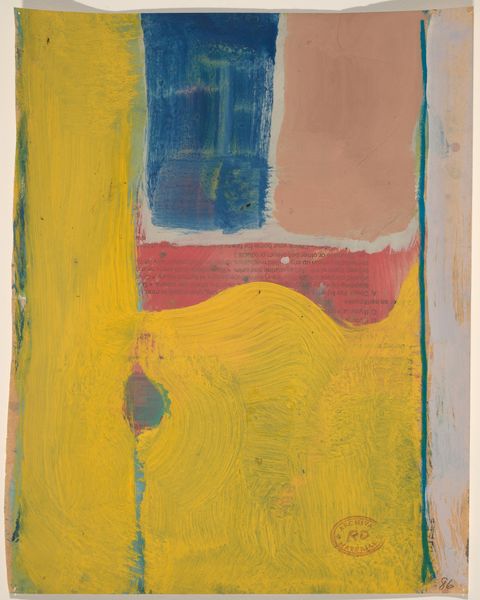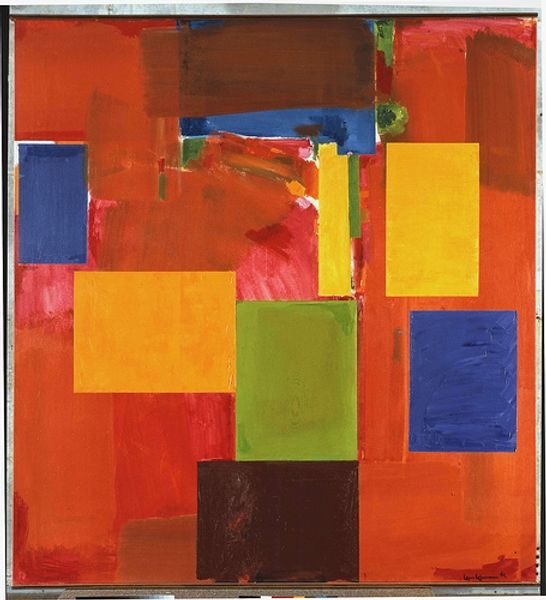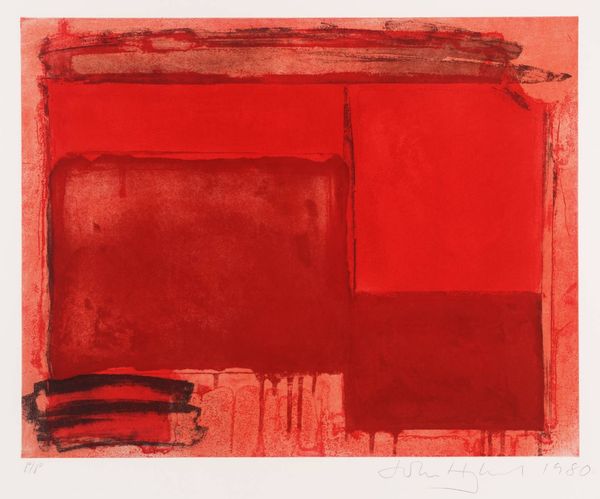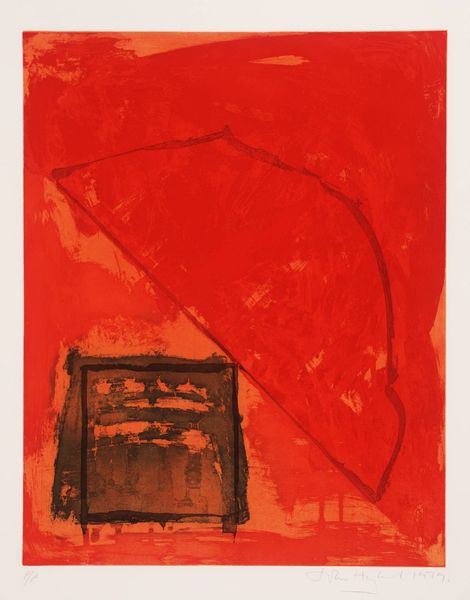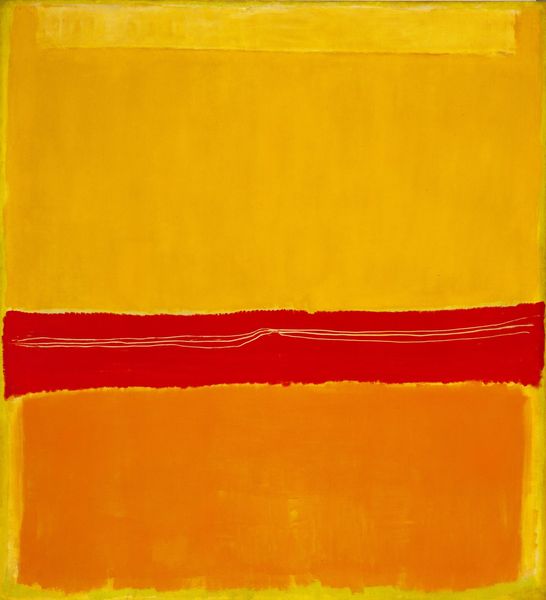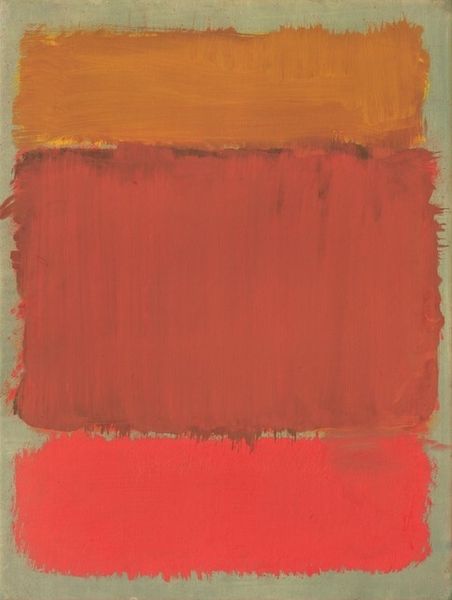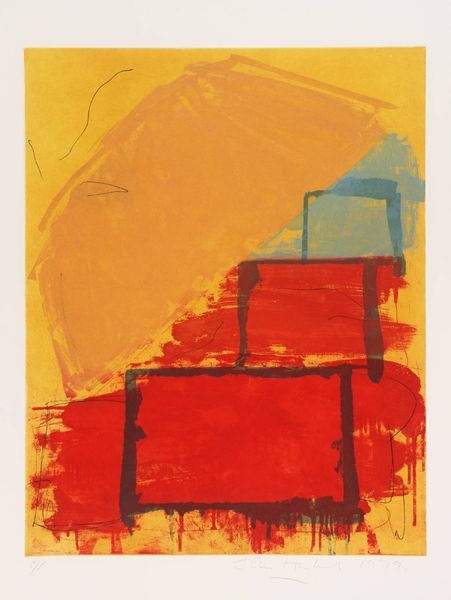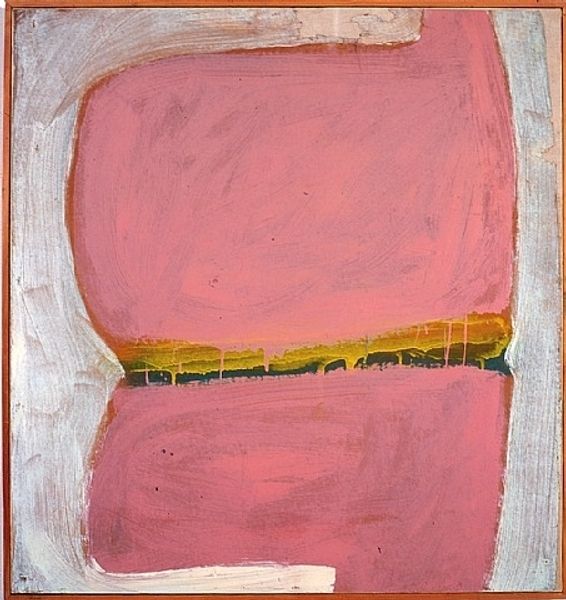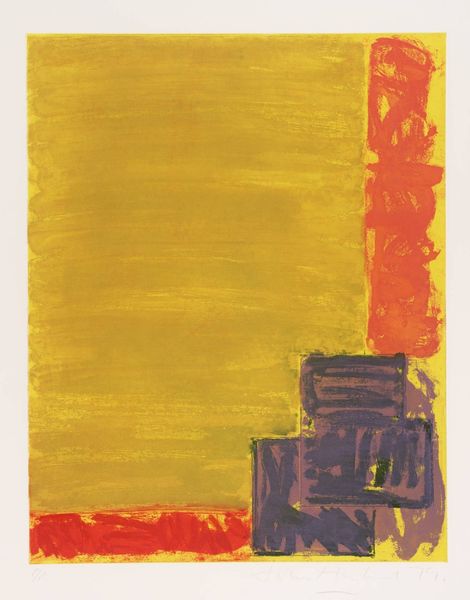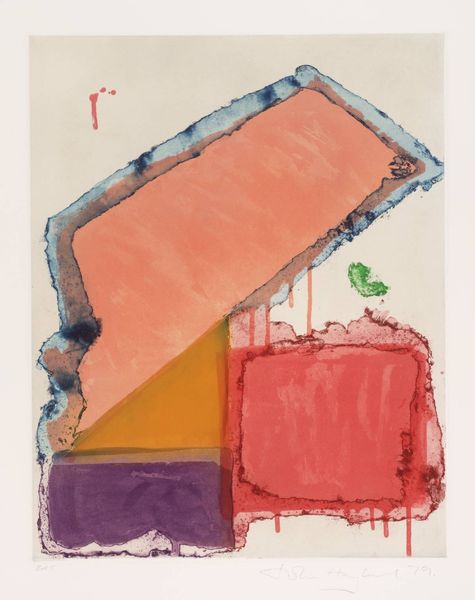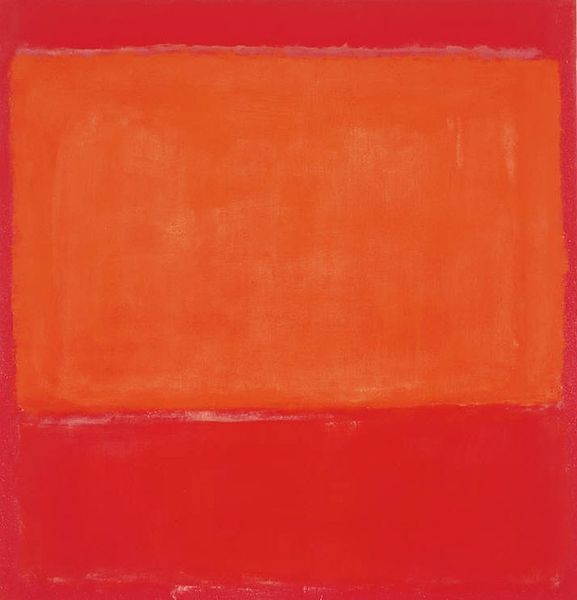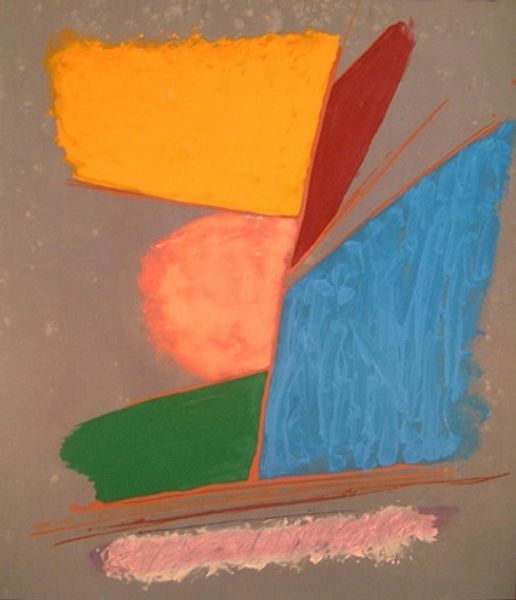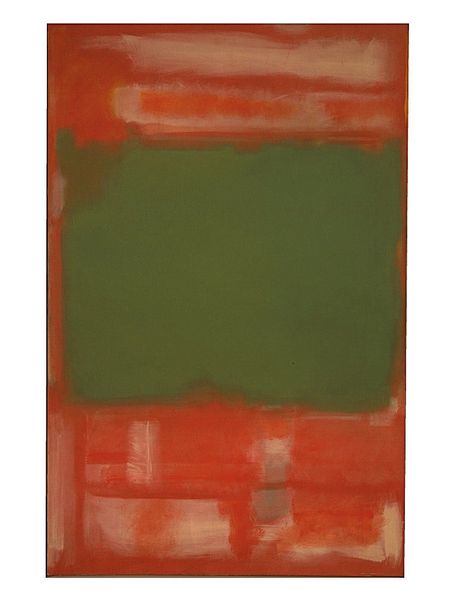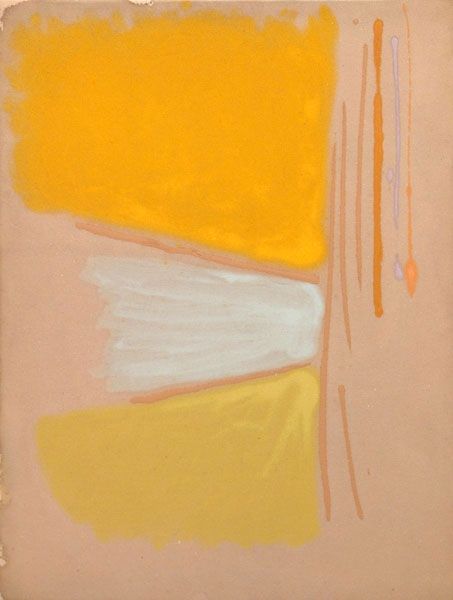
Copyright: John Hoyland,Fair Use
Editor: This is John Hoyland’s "Dido," created in 1979 using acrylic on canvas. The composition, with its bold geometric shapes and contrasting colors, feels strangely grounded despite being abstract. How do you interpret this work? Curator: Looking at "Dido" through a critical lens, I see more than just abstract shapes; I see a conversation about power and representation. Hoyland's use of bold color fields and geometric forms can be interpreted as a challenge to traditional artistic hierarchies. Does this abstraction allow a space free from imposed cultural meanings? Editor: That’s an interesting point. I hadn't considered the shapes themselves as a statement, more that the colours evoke… a building? Curator: Think about it – in 1979, feminist art and critical race theory were gaining momentum. Could Hoyland's abstraction be seen as a deliberate rejection of figurative representation, which often perpetuates societal biases? The colors themselves, do they remind you of other works you have seen? Are these specific color relationships something we have witnessed before? Editor: I guess so! I can almost see connections to constructivism. Curator: Exactly! These geometric forms break down representational traditions. But I wonder, by moving away from traditional representation, does Hoyland succeed in creating a more democratic visual space, or does abstraction inadvertently exclude viewers who aren't versed in art historical language? Editor: I can see both sides, actually. The abstraction does allow for a wide range of personal interpretations. Curator: Absolutely. Considering the social context deepens our understanding. It prompts questions about inclusivity and whether abstract art can truly transcend cultural barriers or simply create new ones. Editor: Thank you for opening my eyes to new insights on cultural themes! Curator: It's in these dialogues that we challenge ourselves and, hopefully, others to think critically. Art isn’t made in a vacuum.
Comments
No comments
Be the first to comment and join the conversation on the ultimate creative platform.
